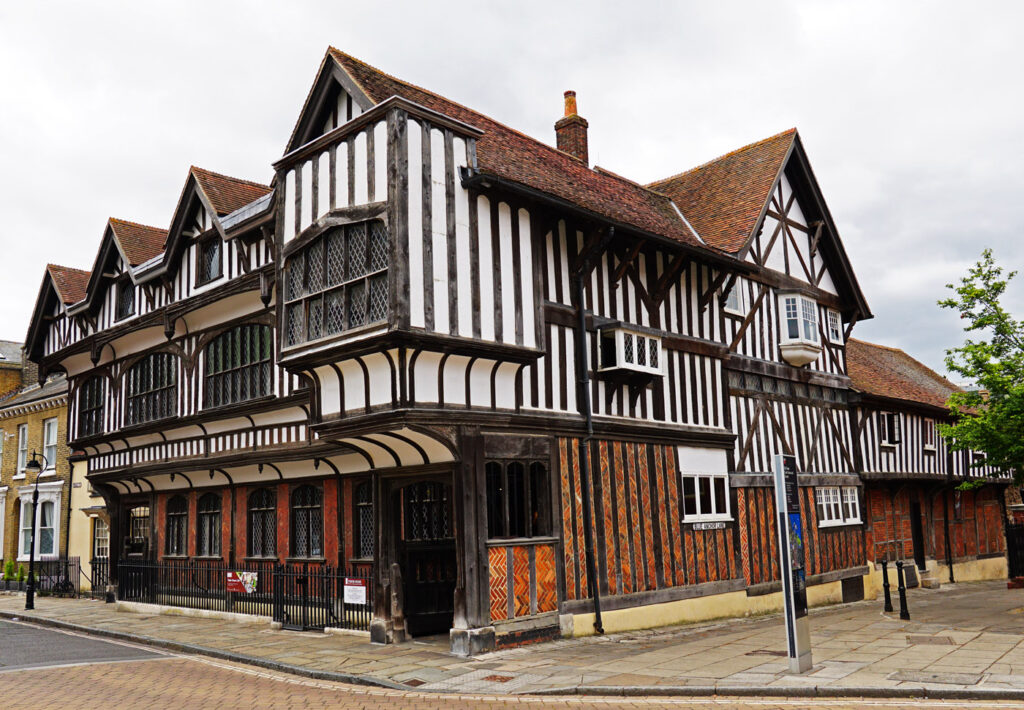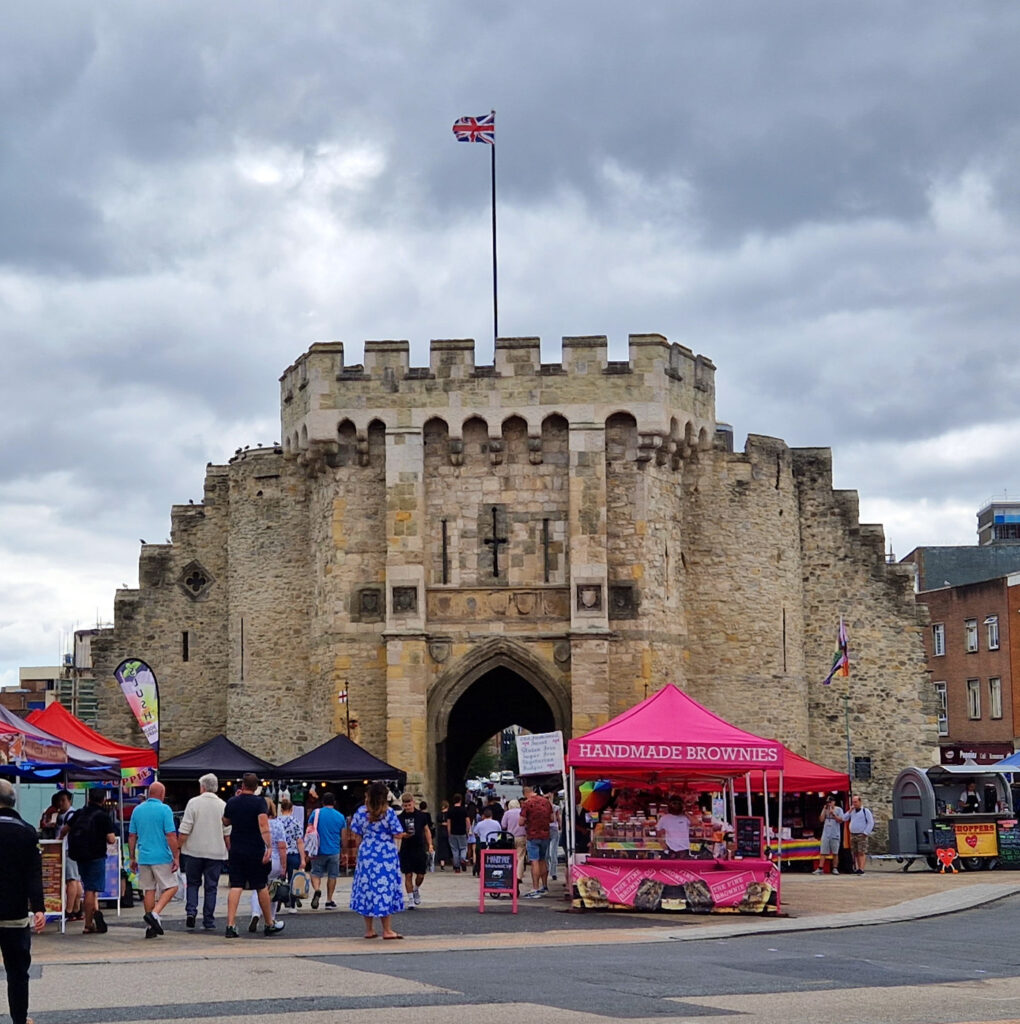- Date: 22 August 2022
- Leader: Gordon Churchill
- Depart: 08:00, Bus Stand F, Petersfield Station
A walk visiting three cities with the aid of five buses
At 0800hrs on a sunny Saturday we boarded the Stagecoach 37 bus from Petersfield and alighted at Drift Road Clanfield where we made our first change of bus. The Firstbus 8 then took us onto Portsea Island, Portsmouth being the only city in the UK to be on an Island. Reaching the transport interchange at The Hard we had a short break to stretch our legs and to look across to HMS Warrior, the first iron clad warship for the British navy built in 1860.




Beyond could be seen the entrance to Portsmouth Historic Dockyard and we watched as the passenger ferry plied its way across the harbour from Gosport.
It was one of the days with no trains running owing to a strike which meant there were extra passengers for our next bus, the Solent Ranger X4 to Southampton. It was a double decker instead of the usual single decker so we went upstairs, and as we left Portsmouth behind and joined the M275 we had a good view of Portsdown Hill where the three forts were built to give early warning of any French invasion. Then, across the water on our left, appeared Portchester Castle built by the Romans in the 3rd Century. After 1066 it was converted into a Norman castle, then between 1665 and 1815 served as a prisoner of war camp.
As we passed over the river Hamble boats of all sizes could be seen, a very busy place. After meandering through various small communities, including threading its way through the narrow streets of Tichfield, our bus reached the bridge over the river Itchen and entered Southampton.
Leaving the X4 close to Town Quay and the Isle of Wight ferry terminal, we started our walking tour of Southampton’s old town area and stopped at God’s House Tower, the oldest part dating from 1189. The tower was built in 1400 to house gun powder and cannons to protect Southampton from attack by the French via The Solent. We took a brief look inside to see the stone construction with ancient timbers in the vaulted ceiling. It has been tastefully renovated and now open as a museum.


We then paused opposite Mayflower Park to read the inscription on the Mayflower Memorial. In 1620 the Mayflower embarked from here and sailed to Plymouth before leaving England for America.
We passed some of the Hares of Hampshire, a public art event, currently in both Southampton and Winchester.


We continued onward in the old harbour area where we stopped at Westgate with substantial walls built following the French raid of 1338. Through this archway marched some of the army of Henry V on their way to Agincourt in 1415. Strange to think that water would have been lapping the walls at that time, the waterfront now in the distance, beyond Mayflower Park.



Passing through the city wall we followed a steep cobbled lane to reach Bugle Street and the Tudor House, now a museum. Its first owner (in 1348) was John Wytegod, a wealthy merchant who also owned property nearby, including King John’s Palace. This was a two storey building with living quarters on the first floor, while the ground floor was used for storing casks of wine unloaded from ships moored at the quayside in front of the house. Readers may like to note the museum is well worth an extended visit one day to explore the building and see all the ancient artefacts displayed.


Continuing along Bugle Street we joined the walls walk, looking down onto what used to be the harbour and across to the very modern West Quay Shopping Centre. Continuing on, we reached the Bargate, a grade 1 listed Medieval gatehouse constructed in Norman times as the main gateway to the city. Before boarding the bus to Winchester we ate our packed lunch in a nearby tranquil park, away from the multitude of shoppers.



From Southampton the Blue Star 1 took us via Chandlers Ford and we enjoyed panoramic views of the Hampshire countryside from the top deck. On reaching our third city, Winchester (Venta Belgarum in Roman times), we alighted in North Walls for a walk through Winnal Moors Nature Reserve, owned and managed by the Hampshire & Isle of Wight Wildlife Trust. We followed the meandering pathway alongside the river Itchen and on through the water meadows, at times on a wooden walkway.





Leaving the Reserve we followed the Itchen to the City Mill, a National Trust property where grain is milled and the flour sold in the Trust shop. We explored the mill which straddles the river and also watched a video showing otters that visit the mill during the night. So much history and so much to see in this beautiful city lying at the Western end of The South Downs National Park.


Leaving the mill, we crossed the road and walked through the public garden opposite King Alfred’s statue. Even though we were in a drought situation, the flower beds still looked remarkably attractive. With seven minutes to spare we reached the bus station for the Stagecoach 67 home to Petersfield. A day packed full of history, with visits to places some of the group had never before seen, or even known about.
Author: Gordon Churchill
Photos: Paul & Linda Farley













